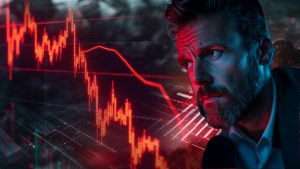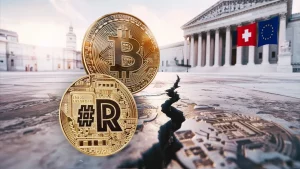By Vahan P. Roth, Co-Founder
invest in industrial metals
Swiss Industrial Metal AMC: A safe way into the base metals market
Maximising profits and minimising losses might be the goal of all investors, but in uncertain and tumultuous times like these, that can be particularly difficult and there are certainly no shortcuts to get there. At RealUnit, our focus is on the long term and our emphasis is on stability and on value preservation. As always, we seek out like-minded partners to help us achieve this mission and this is why we partnered with Zeltner & Co and invested in their Swiss Industrial Metal AMC (Actively Managed Certificate).
Why INDUSTRIAL metals?
Most retail and even many professional investors are wholly unfamiliar with the intricate, often intimidating, but fascinating world of industrial metals. Beyond copper, aluminium, nickel, and maybe cobalt that has become popular in recent years, what do any of us really know about the minor metal market? What of metals like Tantalum, Bismuth, Hafnium? We might know next to nothing about them (or likely haven’t even heard of them at all), but they play pivotal roles in industry, in energy production, even in pharmaceuticals.
The many uses of metals, the particularities of their production and their supply chain are all very intriguing from an encyclopaedic point of view, but for investment purposes specifically, they provide truly unique advantages. Chief among them is the fact that they can be a very effective portfolio stabiliser and enhancer.
Clearly, they are an excellent inflation hedge, something that is a priority for many investors today. However, if one has the know-how and the means to access and to invest in the right basket of metals, they can also add a position to their portfolio that is uncorrelated with stock and bond markets. Of course, one can argue that good old gold can provide that too, but that’s what makes minor metals especially attractive: they are uncorrelated with precious metals too, thereby adding an entirely new layer of diversification to any portfolio.
As for their outlook, it is certainly bright. A look at copper’s fundamentals, one of the most famous base metals, at least to the “layman”, suffices to drive the point home. According to a recent McKinsey report, “electrification is projected to increase annual copper demand to 36.6 million metric tons by 2031. Although current supply projections based on restarts, certain or probable projects, and recycled production offer a pathway to 30.1 million metric tons, another 6.5 million metric tons of capacity (an additional 20 percent) remain to be found.”
A great investment if you can get it – but most likely, you can’t
Even for those investors who recognise the opportunities that these metals offer, who did their homework and are ready to buy, the biggest obstacle still remains. There is no realistic, practical and efficient way to access that corner of the market. Maybe they can buy a copper ETF, or an industrial metals one. However, these offer a very limited selection of metals (for example, there is no Indium or Hafnium investment product) and they often include mining companies, that come with their own risks that an investor might not want to be exposed to.
And most importantly of all, they are paper products. That means they don’t provide the security one gets with physical holdings, but it also means that the paper investor will miss out on opportunities that the direct physical trade offers. Metal prices like those from the LME are merely a reference price and trading directly with industrial buyers can be a lot more profitable.
While physical metals are certainly the way to go, they come with some unique challenges. For example, for a retail investor interested in physical copper, the sheer volume he would need to buy and store is just too daunting. A single ton would not suffice for meaningful exposure; he’d likely need to buy an entire truckload or more. And now imagine if he wanted to diversify, and go for some nickel too, and maybe throw some minor metals into the mix.
It’s not just the logistics and storage that present difficulties, though. Unlike gold and silver, that come in standardised and uniform bars and coins, base metals require much more sophisticated and specialised knowledge. Their particular type, shape and state matters, and it matters a lot. It affects the price and how easily they can be sold, as their industrial uses have strict specifications.
A good example is the battery metals craze of the past few years. With a lot of mainstream analysts talking about Electric Vehicles (EVs) and the “green revolution”, many investors rushed into cobalt and lithium. However, lithium doesn’t simply come in a neat and convenient format like gold bars, that are easy to store and to transport. In fact, it’s actually flammable in some states and it requires specialised handling.
Another “detail” that most investors didn’t know, was that the actual material that battery makers use is lithium cobalt oxide, already a mix of two, and that’s the most profitable product to invest in. Even the shape itself plays a big role: for instance, cut cobalt cathodes of a smaller size can command a better price, as they require no further processing and fit into the most common machinery that the industry uses to process them.
Another way that specialised knowledge of this market proves itself to be essential for investors is the understanding of price fluctuations and what’s driving them. A lot of base metals tend to trade sideways for a long time before an explosive spike. Molybdenum, for instance, had been “quiet” for quite some time before it surged to $100K from $30k per ton. The trigger was the Ukraine war. As molybdenum is needed to harden steel, it wasn’t the first time that demand for the metal went through the roof. It became a wildly sought after commodity during WWII as well, and it spikes during wartime ever since.
Finally, there’s another factor that complicates things even further and is becoming increasingly important in recent years. The rise of ESG investing and the regulations that have come with it have made it essential for metals investors to consider the providence of their holdings. In some cases, the largest producers might be under ESG scrutiny, pushing demand higher for the same metal but from a different country. The same is the case with tariffs and trade wars, like the ongoing one between the US and China. This is why cobalt from Norway trades at a premium compared to cobalt from Congo and why indium from Japan is more expensive than indium from China.
The Swiss Industrial Metal AMC solution
All these barriers to entry were what got the team behind the AMC thinking that there is a clear need for an investment vehicle that would allow investors to access this market in a simple, efficient and effective way. Thomas Zeltner and Kim Wirth, CEO and CIO of Zeltner & Co respectively, used their expertise and experience in investment and financial services and joined forces with Nico von Burg, founder and CEO of Swiss Metal Exchange and with Martin Palushaj, an extensively experienced raw materials trader. They brought their hands-on and specialised expertise, as well as their global network to the table and together they created a unique and robust product in 2021, which they still ensure remains competitive as members of its Advisory Board.
From our perspective at RealUnit, not only did we recognise the potential of such a product, but we also had good reason to trust the people behind it: Kim Wirth had worked for RealUnit before he took on this role, which offered us the chance to experience firsthand his professionalism, his insights and his reliability, while Nico von Burg had already been a valued partner, as we had directly held physical metals at Swiss Metal Exchange in the past.
The Swiss Industrial Metal AMC allows investors to overcome all the aforementioned obstacles. It combines a constantly updated and recalibrated basket of physical metals, which is reviewed and adjusted weekly by the Advisory Board, allowing for efficient diversification. Also, the metals are all transported and securely stored in the open customs warehouse of Metal Depot AG in Switzerland, which solves all logistics challenges.
The allocation strategy is based on a “Core-Satellite” approach. Core metals are liquid holdings like nickel, copper or tin, which can be shipped from their warehouse today, be in Rotterdam by tomorrow and into the LME system, after which they can receive payment immediately – all within a few days. And then there’s the Satellite metals allocation. These are more illiquid, but can offer bigger returns. Once again, the caveat to those potential returns is deep and specialised knowledge, but also an extensive and reliable network. For instance, even if a private investor made the effort to fully familiarise himself with all the minutia of hafnium production and industrial uses, he still would not be able to sell it, as there is only a handful of industrial buyers who only do business with trusted and established professionals. The AMC team, however, scored one of its best wins with it this year. It is heavily used in the nuclear energy industry and in the production of “super alloys”, so as the war in Ukraine erupted and as the fuel crisis hit Europe, demand for it skyrocketed and increased 10-fold.
Of course, this precious knowledge is one of the main advantages that the AMC offers to investors, however it also provides transparency and security. All metals undergo extensive and expert quality assessment, something that is not within the reach of the average “layman” investor and they also undergo regular audits. Actually, due to the fact that they are stored in Metal Depot AG, which is a bonded warehouse, the Swiss Customs authorities also perform inspections and audits directly.
And then there’s the “hands-on” approach of Nico and his colleague Martin when it comes to the practical side of purchasing and transporting the metals. It is not uncommon at all that they travel personally to refineries in Indonesia and other locations around the world to take delivery of the metals directly, to perform quality checks and to oversee the whole process, from loading until they finally arrive at the warehouse.
It is also interesting to note that most of the metals the team trades for the AMC are recycled products. It not only makes environmental sense, but it also makes financial sense. It is simply cheaper and easier to strip materials, than to mine them, refine them and ship them across the globe.
The result of all this hard work, combined expertise and practical know-how is a product that is resilient, solid and sound. It offers the kind of stability that we’re pursuing for our own investors at RealUnit and it clearly demonstrates the superiority of investments in real, tangible assets.
The author




